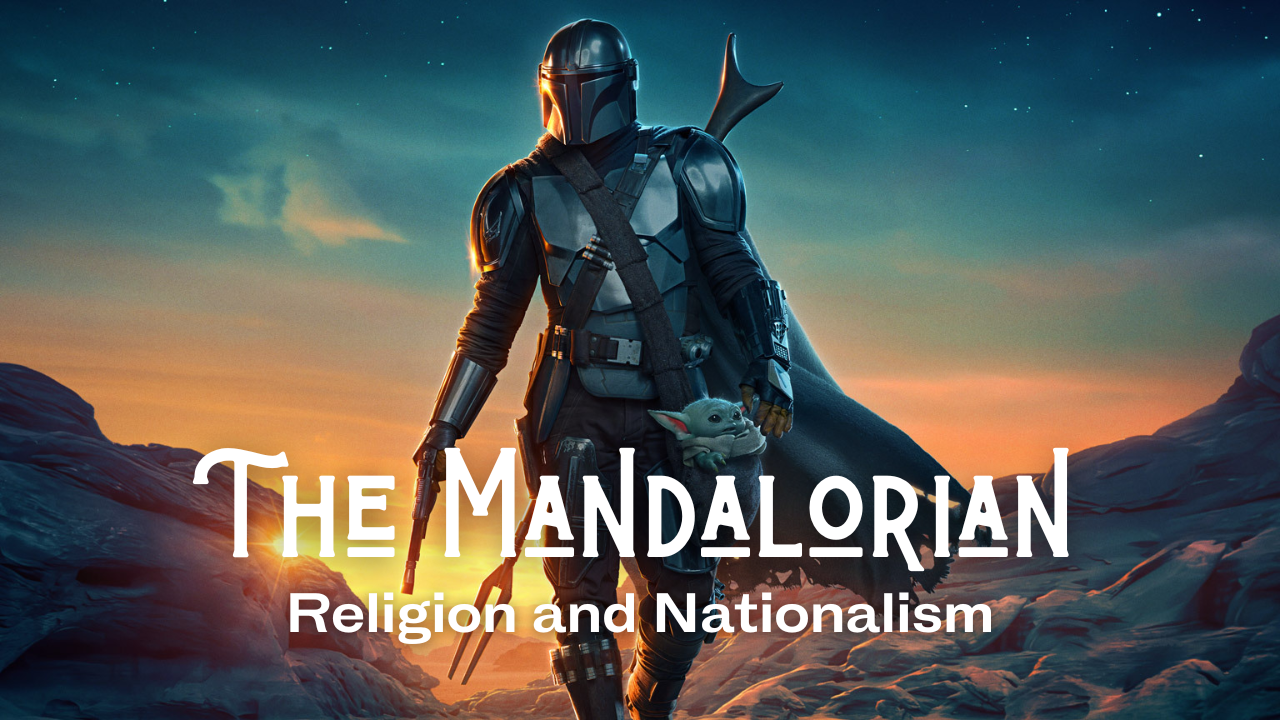
Incidental Mythology
Mythology has never faded away. It has always been a part of us, lingering in our stories as we continued to tell them throughout time. Our current stories, the popular culture around, are our mythology. Its not mythology through some machinations of corporate capitalists who only want more money from our interest. They’re myths because they just are, incidentally.
At Incidental Mythology we explore our contemporary meaningful stories, and really dig down into what these narratives mean to us and why we care so much to tell them, play them, and watch them. At Incidental Mythology, we explain our contemporary mythology, legends and folklore, all in the world of entertainment, and through it learn a lot more about ourselves.

Self-Mythology in Win or Lose
Win or Lose demonstrates how storytelling is all about perspective - difference of perspective shifts narratives and understandings. All stories are impacted by the narrator and the experiences they face. Win or Lose helps to paint the way that self-mythologising happens at all times, and how this perspective also impacts our views and the stories we tell of others.

Psych and the Camp Detective
USA's Psych is one of my favourite shows, so it's time for a little video essay on it! One of the things I think is most prevalent about the show is its absurdity and exaggerations. I argue that Psych is a presentation of the detective genre as camp, and camp from the perspective of heterosexuality masculinity. The show has a nuance to its craziness which forces the audience to question reality, and the levels of and garnering of knowledge.

Frieren, Grief, and Memorialisation
Today, we're talking about Frieren: Beyond Journey's End - an anime that starts at the end. A typical fantasy set up of an elf, a dwarf, and two human heroes saving the world is turned upside down when time continues to move forward, and suddenly only an elf with a long life remains, looking back at the companions she's lost. Frieren is a show about grief and memory and the ways we recontextualise those we lost throughout our life. But most of all, Frieren is a show about how to live.

Mythology Retelling in Hades
Today, we're talking about the role that video games play in retelling old myths, and I think one of my favourite examples of this is Hades. Supergiant Games decided to utilise a relatively obscure figure in Greek Mythology, Zagreus, and not only give him a proper story, but also incorporates all variants of the Zagreus myths which exist. They provided reasons for these variants to exist, which helps to elevate their retelling to being a myth itself.

Jack Skellington: Trickster
As a nice little Christmas treat, I wanted to talk about the figure that occupies the minds and hearts of every little emo and goth kid from the naughties: Jack Skellington. Nightmare Before Christmas occupies the lovely space between Halloween and Christmas, uniting the two holidays which are typically at odds with one another. I want to talk about that liminal space, and the figure that embodies it, the protagonist Jack Skellington. We talk about Jack as a Trickster figure, and how it demonstrates the odd character arc he experiences throughout the film.

Cosplay and the Dressing of Identity
This week, we have a nice little excerpt from the second chapter of my new book Cosplay and the Dressing of Identity, out now! We chat about the history of cosplay, the sociology of dressing, and how cosplay is so much more than just dressing up.

The Divine Beast Dancing Lion
Today's video essay was inspired by a conversation had over an Elden Ring speed run. So we're talking about probably my favourite boss design: the Divine Beast Dancing Lion. The Dancing Lion's design is based on masked and costumed rituals, most notably the Chinese dancing lion. We talk about the power of these types of rituals, why they matter, and how they work. And ultimately figure out why the beast's weak spot is still its head.

Spiritfarer and the Sociology of Grief
Today, I wanted to return to a topic I first wrote several years ago when Spiritfarer first came out. Spiritfarer is a game about death, dying, and grief. And its done through the social dyanamics of grief. I use primarily Dennis Klass's concept of Continuing Bonds to explore how Spiritfarer's social dyanamics depict bereavement as a constant ongoing process of realising and recognising our personhoods.

The Meaning of Monsters
Today, I wanted to take a step back from specific studies of something to look at monsters more generally. Monsters are, of course, one of my favourite subjects to talk about, and because I'm planning a few monster studies in the near future, I decided it would be good to prime the channel with a more general study of monsters. But, of course, I had to have a good case study, so turned to Fullmetal Alchemist's most depressing monster: the child-hybrid chimera.

Food and Storytelling in Lord of the Rings
Today, we're finally delving into the Lord of the Rings. It's been awhile without touching it, but I'm always happy to live temporarily in Middle Earth. The point of discussion today is food - yes, food. Food for hobbits is an important part of their culture, and food metaphors and depictions form an angle of Tolkien's storytelling.

No Face Explained
No Face is one of the most distinct creatures in Spirited Away, despite him looking incredibly simple and basic. So this essay explores what role No Face plays in Spirited Away, and what he represents. We look at the themes of consumption, connections and disconnections that are woven through the movie, and how No Face is central to all these themes.

Video Games are Mythology
We're returning to the idea of pop culture as mythology, but this time focusing in on video games. While this video game is a bit more technical, I think it's also really important and may be of interest to people. We get a little into what it is that video games do that situate them as mythology, but more importantly we think a little more about what that actually means.

The Babadook and Monstrous Mothers
The Babadook is an Australian horror film which changed the landscape of monster movies. The Babadook is a doppelganger monster, a creature who represents depression, complicated manoeuvres between reality and fiction, and, more importantly, ambivalent motherhood. Babadook is a representation of this type of monstrous motherhood, one which is condemned by social regulations on women and mothers.

Clifford Geertz Meets the Triforce
Today, we trip into the more academic side of things with a critique of anthropologist Clifford Geertz, but we keep it Incidental Mythology by using the Triforce in Zelda to do so. We talk about Geertz's view of symbols, and the importance of multiplicity of meanings. The Triforce represents many things: the Hylian cosmology, the ideal characteristics of a person, the power of the Hylian royal family, and also a representation of the game series as a whole. So let's chat about symbols, religion, Geertz, and the Triforce!

Detectives as Tricksters
This month's essay is a study on the detective and detective fiction. We look at the structural role of the detective, and what elements they provide for the narrative. We look at how the detective functions within a narrative, and what special characteristics they have. And through that, we see the detective is a form of contemporary pop culture trickster.

The Mandalorian, Religion and Nationalism
The Mandalorian lets viewers in on the complicated nature of the survival of Mandalorian culture in the middle of diaspora. In this essay, I explore Anthony D. Smith's theory of nationalism and nations through the Mandalorian, to understand how focus on folk traditions and religion helped to sustain Mandalorian culture when unable to return to their homeland.

Stranger Things: a structural mythic analysis
Strap in for a slightly longer essay than usual, because this week we're doing a structural analysis of the first season of Stranger Things. Jumping off from the idea of Pop Culture as Mythology, we're going to illustrate that what actually means when we directly study a piece of pop mythology. Stranger Things argues against structures of society that sets the us against them. By reinterpreting the classic cultural structures, it demonstrates ways to defend the vulnerable and fight against government pressures.

Notes on a Scandoval
In this essay, we're digging into the scandoval that shook the world of reality television. Of particular interest for us is the way the story of the scandal unfolded, and why it was so enticing and so juicy for the audience. We talk about the way the characters developed on our screens over the course of ten years, and how the complicated nature of reality television timeline means an intricate web of dramatic irony.

Shadow Texts and the Ancient Magus’ Bride
This month's essay covers an aspect of pop culture and mythology that we don't talk about as often: the way that myths are sometimes used in popular culture in their storytelling. We talk about how mythology is used as a form of exoticisation in some narratives. But we also talk about how some narratives, like the Ancient Magus's Bride, use mythology as a shadow text which provides focus and legitimisation to the story.

Repetition as Mechanic and Story in Video Games
In this essay, I'm looking into repetitive game types, particularly rogue-like and rogue-lite games. Using Hades, Cult of the Lamb and Moonlighter as my primary focus, we talk about how these games utilise repetition to tell the story of the game without fatiguing the player with too much of all the same.